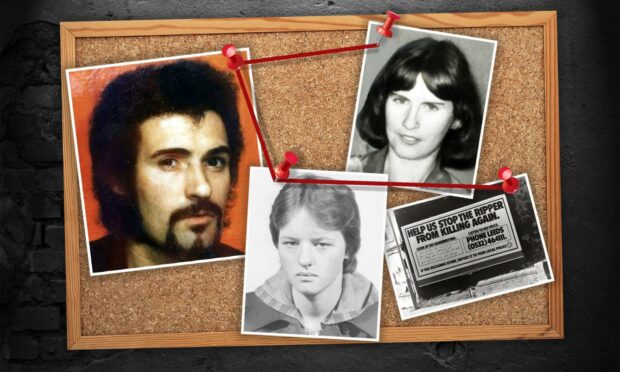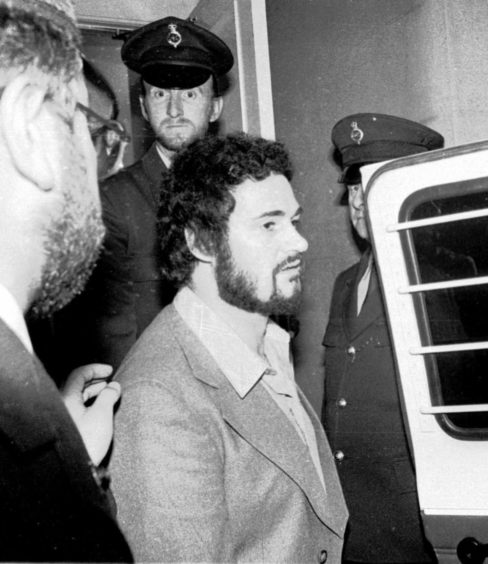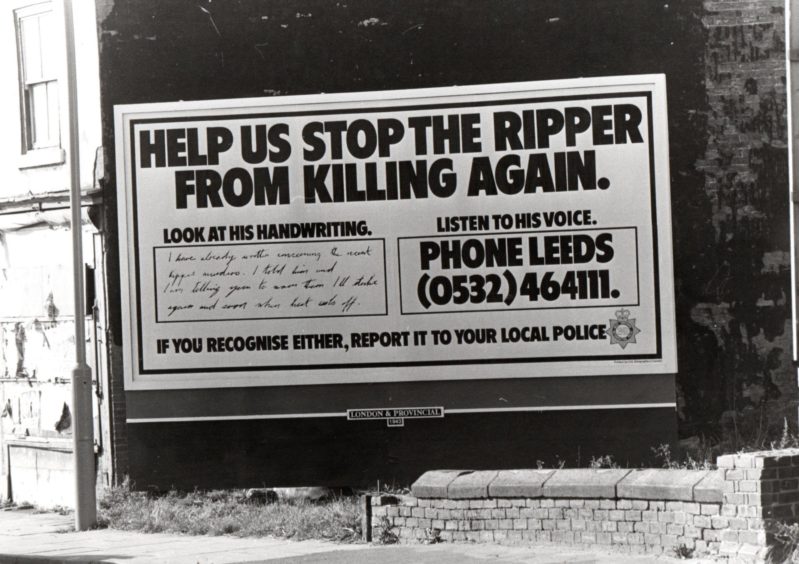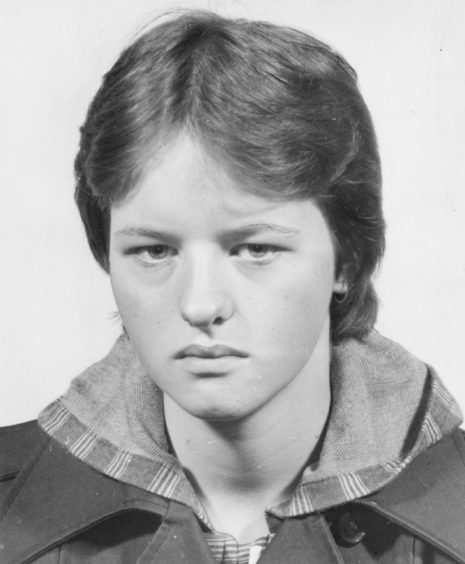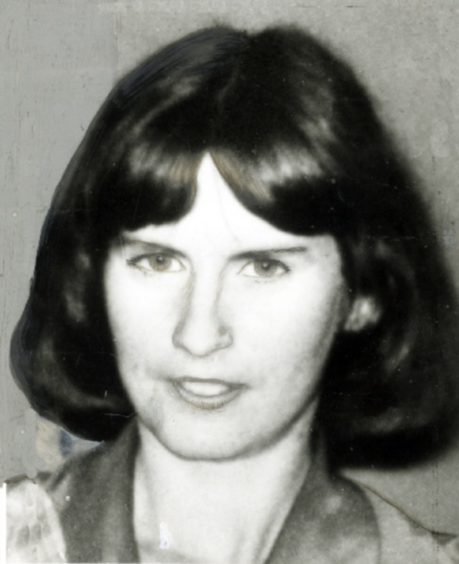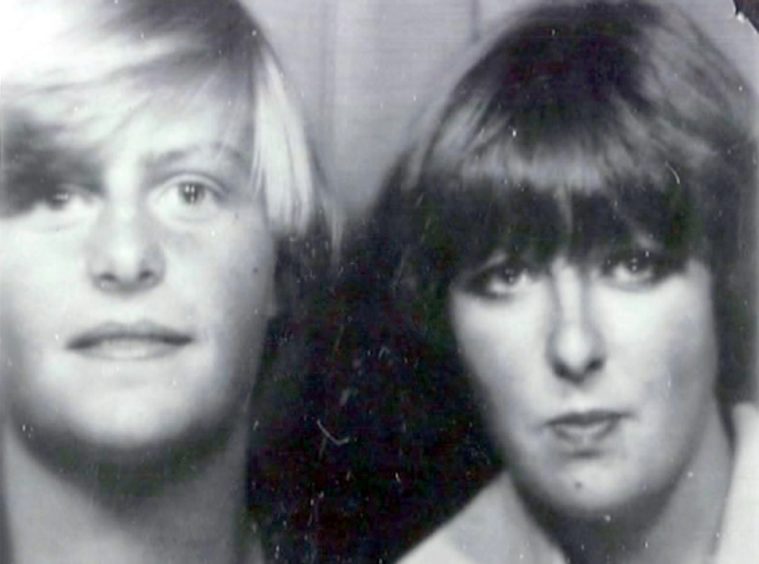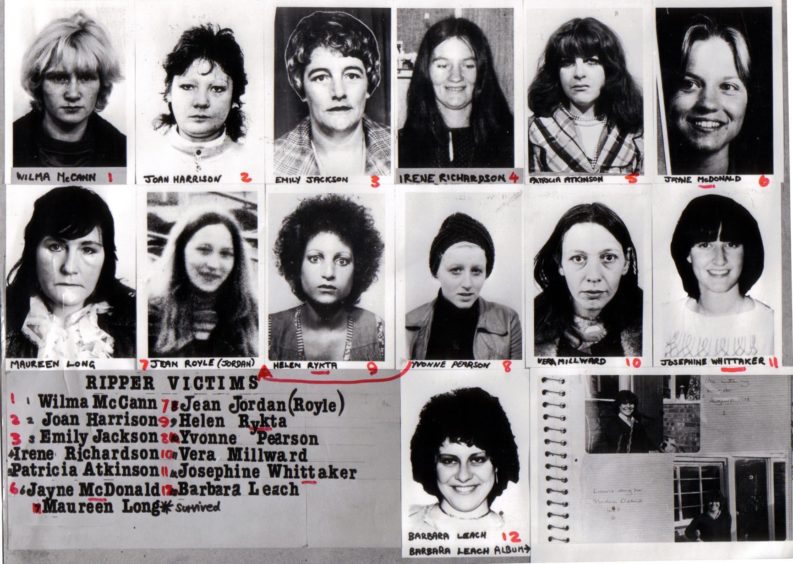“It’s all right, I know what you’re leading up to. The Yorkshire Ripper. It’s me. I killed all those women.”
Peter Sutcliffe began a detailed confession.
Britain’s biggest manhunt had ended.
He made only one request – that he be the one to personally tell his wife, Sonia.
It was on January 2 1981 that the man who had brutally murdered 13 women was finally snared in a red light area of Sheffield.
“I knew I would have gone on and on,” said Sutcliffe.
“Now I have been caught, I just want to unburden myself.”
Unsolved cases
Sutcliffe was found guilty of murder on all 13 counts and attempting to murder seven others and was sentenced to life imprisonment at the Old Bailey.
His victims were mainly prostitutes and many of their bodies were horribly mutilated with hammers and knives during a five-year reign of terror.
West Yorkshire Police had been savaged by the press and politicians for their bungled investigation, which was derailed by a series of hoax letters and tapes.
Chief constable Colin Sampson was determined not to be further humiliated by a queue of rival forces who wanted to interview the Ripper over a long list of similar crimes.
Keith Hellawell, then the assistant chief constable, was charged with questioning him and put together a team of detectives to examine unsolved cases from all over Britain.
Dr Hellawell sat opposite Sutcliffe in Broadmoor High Security Hospital for a decade, from 1982-1992, during 30 visits and picked away at his defences.
“There were 78 unsolved murders and attempted murders potentially committed by Sutcliffe,” he recounted in his memoirs.
“By a process of elimination we reduced the number to 22 possible offences, 12 within our force area, the remainder outside.”
Hellawell had been promoted to chief constable by the time Sutcliffe ended their meetings.
The unsolved murders of Carol Lannen and Elizabeth McCabe were included in the secret investigation into six possible Yorkshire Ripper attacks in Scotland.
Carol Lannen
The strangled and naked body of part-time prostitute Carol Lannen was found dumped in Templeton Woods in Dundee on March 21 1979.
She was last seen the evening before, when she entered a red estate car in Exchange Street.
Owners of red cars were interviewed and a photo-fit of a suspect was released.
After the initial discovery, her handbag and clothes were found on the banks of the River Don, near Kintore.
The case soon went cold.
Then things took a sinister twist.
Elizabeth McCabe was like any other young girl in Dundee when she left her house in the Lochee area of the city for a night out with friends.
On Sunday February 10 1980, she got ready as usual at her family home in Lyndhurst Avenue.
She had planned just the usual weekend night out with friends, visiting the popular haunts in Dundee’s city centre.
When she didn’t come back in the early hours of Monday, her parents were immediately suspicious because it was out of character, and reported it to police.
Police were notified, but it took a few weeks before things began to pick up pace.
On a bitter Tuesday at around midday, dog walkers in Templeton Woods made a macabre discovery.
Elizabeth McCabe’s partially clothed body was found deep within small fir trees, 150 yards from where the body of Carol Lannen was discovered just 11 months earlier.
The haunting similarities between the cases were not lost on uneasy Dundee residents and raised fears a serial killer was on the loose.
Officers stated there were no strong indications they were searching for one killer, but said they were aware, if the same person did commit both murders, there was a possibility a third killing could take place.
Various developments in the months and years which followed offered fresh hope of an arrest, including the discovery of the student’s handbag on rough ground off Logie Street five weeks into the murder hunt.
The location, on her route home, suggested that the petite former Menzieshill High School pupil might have been attacked while walking home.
But officers were also pursuing the theory that she accepted a lift home in a car.
Sutcliffe link?
Lorry driver Sutcliffe made delivery runs north of the border and stayed with a 35-year-old girlfriend, Theresa Douglas, in Holytown, Lanarkshire.
He had met the divorcee in the Crown Bar in the village, near Motherwell, when he made a delivery to the local General Motors plant in 1979.
Hellawell linked Sutcliffe to the Dundee deaths in December 1996 and the murders of Anna Kenny, 20; Hilda McAuley, 36; and Agnes Cooney, 23; who were all killed in separate incidents in Glasgow in 1977.
Also linked were the double murders of friends Helen Scott and Christine Eadie, who were last seen leaving The World’s End pub in Edinburgh on October 15 1977.
After a police review of the murders in 2004, Angus Sinclair was eventually convicted of The World’s End murders and jailed for 37 years in 2014, following a retrial.
Cold case expert Chris Clark and journalist Tim Tate investigated unsolved cases from across the UK for a book about Sutcliffe’s “secret murders” in 2015.
Mr Clark, who served with the police from 1966 to 1994, believes Sutcliffe did kill in Scotland while working as a long-distance lorry driver but said the Lannen and McCabe murders are “extremely unlikely to be connected to the Ripper series”.
“The lack of any mention of head injuries or stabbing in the description of either of the murder victim’s injuries must be noted,” he said.
“With the absence of those type of injuries, then the possibility the victims were the responsibility of Peter Sutcliffe is severely diminished.”
Patrick Anderson, who lives in Letham in Angus, moved to West Yorkshire Police from Strathclyde Police in April 1979, at the height of the search for the serial killer, and worked on the Ripper case in Bradford’s red light zones.
“Women were frightened to walk the streets,” he said.
“I worked with Keith Hellawell and I know he was granted access to speak to Sutcliffe during his time in prison but did Sutcliffe really tell him the truth?
“I was always interested to hear Keith’s thoughts on further attacks and murders that Sutcliffe might have committed, such as the two in Dundee.
“Murderers often hold back details of other crimes – it gives them power – and I am sure there were others that Sutcliffe took with him to the grave.
“Sadly, that means that many families never get the closure they deserve.”
Evidence from the crime scene and the victim was re-examined.
Police arrested Vincent Simpson 27 years after they had first questioned him.
The former Angus taxi driver was eventually cleared of the murder of Miss McCabe at the High Court in Edinburgh in 2007, after a jury returned a not guilty verdict.
Jurors during the seven-week trial were told of a litany of missing evidence, including samples taken from the deceased, her tights and her underwear.
More like this:
Gripped by fear: Angus man tells of role in hunt for Yorkshire Ripper Peter Sutcliffe
Carol Lannen: Dundee unsolved murder hunt exploded to life again 40 years ago
